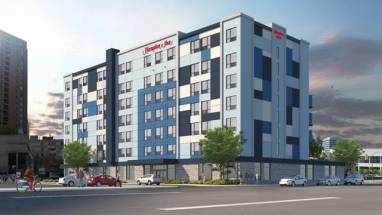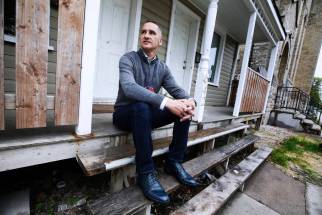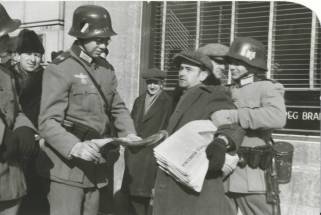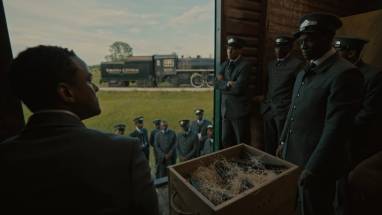Full steam ahead Ambitious Winnipeg-shot period piece kept chugging along despite pandemic obstacles
Read this article for free:
or
Already have an account? Log in here »
To continue reading, please subscribe:
Monthly Digital Subscription
$0 for the first 4 weeks*
- Enjoy unlimited reading on winnipegfreepress.com
- Read the E-Edition, our digital replica newspaper
- Access News Break, our award-winning app
- Play interactive puzzles
*No charge for 4 weeks then price increases to the regular rate of $19.00 plus GST every four weeks. Offer available to new and qualified returning subscribers only. Cancel any time.
Monthly Digital Subscription
$4.75/week*
- Enjoy unlimited reading on winnipegfreepress.com
- Read the E-Edition, our digital replica newspaper
- Access News Break, our award-winning app
- Play interactive puzzles
*Billed as $19 plus GST every four weeks. Cancel any time.
To continue reading, please subscribe:
Add Free Press access to your Brandon Sun subscription for only an additional
$1 for the first 4 weeks*
*Your next subscription payment will increase by $1.00 and you will be charged $16.99 plus GST for four weeks. After four weeks, your payment will increase to $23.99 plus GST every four weeks.
Read unlimited articles for free today:
or
Already have an account? Log in here »
Hey there, time traveller!
This article was published 18/02/2022 (1392 days ago), so information in it may no longer be current.
The story told in the eight episodes of the new CBC series The Porter is one of overcoming adversity to triumph against impossible odds.
As it happens, that is also the story of the making of the series itself, which was shot in and around Winnipeg over about 75 days from early June to mid-September of last year. It premières Monday.
TV PREVIEW
The Porter
Directed by Charles Officer and R.T. Thorne
● CBC
● Monday, 9 p.m.
The show presents a wide array of characters in locations as far afield as Chicago and New York, but mainly in the community of St. Antoine in Montreal, a.k.a. Little Burgundy, the “Harlem of the North.”
In particular, The Porter focuses on two Black railway porters — Junior Massey (Aml Ameen) and Zeke Garrett (Ronnie Rowe Jr.) — who take different paths in carving out their dreams of a prosperous life against the tide of racism that prevailed in 1920s North America.
That subject, still tragically relevant, brought to Winnipeg what would become the biggest Black-led production in our country’s film-production history, led by a creative team that includes directors and executive producers Charles Officer and R.T. Thorne, and writer-showrunners Annmarie Morais and Marsha Greene.
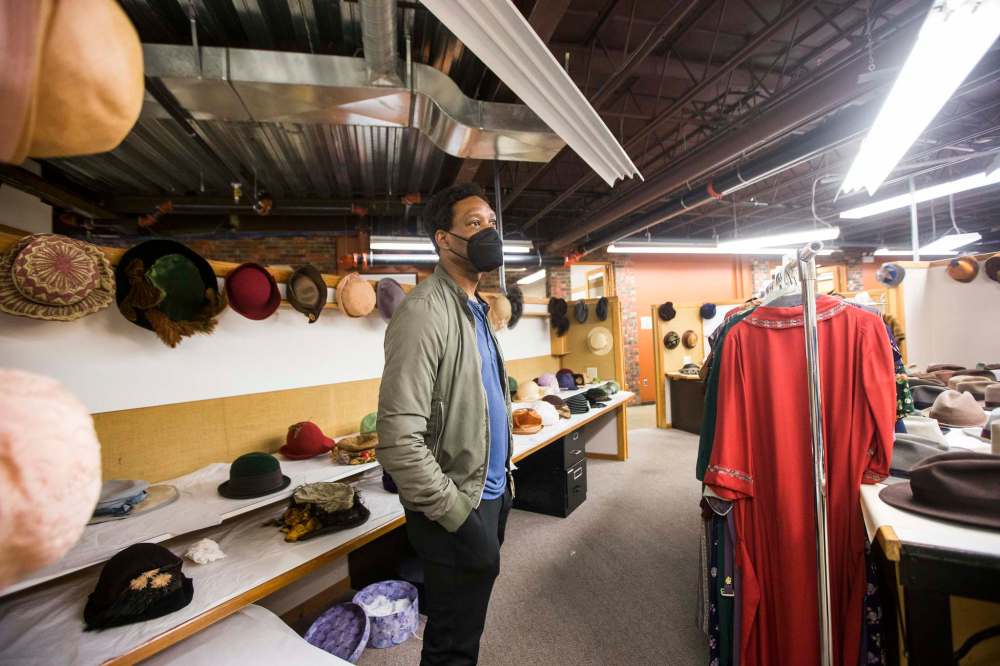
Getting the train going was creator/writer/executive producer/actor Arnold Pinnock, who conceived of the series when he came upon the story of the first Black labour union of sleeping car porters, created in Winnipeg in 1917.
In a Zoom session with the creators, they acknowledge it was a tough shoot, not only getting eight hour-long episodes in the can in a little more than three months of production, but doing so with strict COVID-19 protocols in place.
“We had conceived the show before the pandemic,” says Greene, a writer-producer on shows such as Mary Kills People and Private Eyes. “And then once we started to write, it was early days and we thought, ‘Maybe everything is going to be fine by the time we have to shoot it.’
“That didn’t happen.”
“It was challenging in the beginning and certainly time-consuming. But we found our rhythm as the time went by with such an amazing team by our side.” – Marsha Greene
But the production went ahead with a heroic set of protocols in place on the set.
“We had this incredible COVID team that was just daily testing people that were coming in and testing the people that were there every day and standing by with masks and bags — everybody with their PPE every day, taking temperatures,” Greene says.
“As I recite this, it’s kind of mind-blowing to me how much they had to take care of on a daily basis on a very long shoot — 73 days or whatever. It was challenging in the beginning and certainly time-consuming. But we found our rhythm as the time went by with such an amazing team by our side.”
Their efforts show on the series itself, which doesn’t look different from the “before times” in TV production.
“We feel really grateful that we don’t look like a pandemic show,” Greene says.
The city of Winnipeg came through for the production team in its locations, which happened to match the period — the 1920s — in larger bustling metropolises such as Chicago and especially Montreal.
“We connected with the incredible (production) designer Réjean Labrie,” says writer-director Officer (Akilla’s Escape). “He’s actually from Quebec and he relocated to Winnipeg. He had this amazing insight into Montreal but also what exists in Winnipeg and we found some amazing locations.”
Owing to COVID, Officer and fellow director Thorne had to initially scout locations remotely starting in February 2021. But even then, they took joy in finding both historic and architectural features that synced perfectly with the early-20th-century locations they required, from the Prairie Dog Central train station to the Nutty Club candy factory.
Set of The Porter a testament to the special connection production has with Winnipeg's Black history
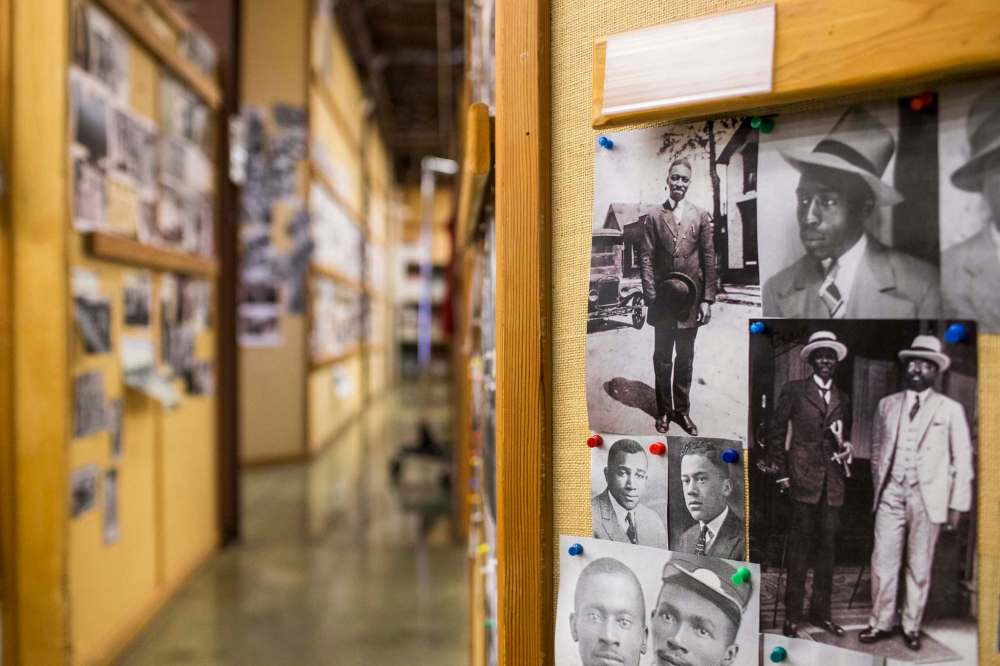
Posted:
On a rainy Friday evening in Winnipeg’s landmark Nutty Club building, camera crews, grips, food services, hair and makeup teams, stand-ins and actors are spinning about in dance-like organized chaos.
“I have always been fascinated — from years and years ago working in Winnipeg — with the various cities that can be represented in this one place,” Officer says. “I don’t think we could’ve shot this anywhere other than Winnipeg.
“With our parameters and budget, we found this amazing playground where we were able to reimagine Montreal and Chicago and New York all in one place, which is rare.”
The hardest part of the process, the creators agree, was gathering the Black community in Winnipeg to come together for the shoot.
“We didn’t really have access to them,” Greene says. “We needed the help of, like, the Winnipeg Free Press and the people on the ground who could really bring people to us.
“That was a challenge because we weren’t from there and we didn’t really know the area and know how to tap the community, as opposed to had we been in Toronto, for example, where we were all from.”
Thorne says he didn’t view that process as a negative.
“Telling the story, we really had an approach that we wanted to integrate the community into the process of our storytelling, so one of the challenges was probably (gathering) a more diverse crew,” Thorne says.
“That’s a challenge across this country. It’s not just Winnipeg. But for us, it was important to leave an impact on the community that is there, in which they get to participate not only in front of the camera but behind the camera.”
• • •
If his English accent didn’t give him away as a Brit, Aml Ameen’s use of colloquialism would seal the deal.
Of his arrival in Winnipeg last year to star in The Porter, the actor (I May Destroy You, Sense8) says he was “bricking it.”
That is, he was, uh, somewhat terrified of entering the city of Winnipeg for what would be an extended shoot to portray railway porter Junior Massey, a man who doesn’t follow a law-abiding path in his quest for success within a society bent on keeping Black people on the lowest rungs of the ladder of aspiration.

“I landed in this airport in the middle of a pandemic and it was quite great and Soviet Union-style,” he recalls with a laugh in a Zoom press conference.
“I was absolutely sh—ting myself. I was like: My God, where am I? It was raining that day and for some strange reason, the police came and got someone off the plane. So I was, like, bricking it.”
He acknowledges the pandemic didn’t help.
“The place was completely and utterly shut down. There was nothing happening,” he says. “But in a strange way, it really bonded us in the cast in a beautiful way.”
The show galvanized Ameen, and indeed all the actors, with a sense of purpose in the way it put the spotlight on characters that have historically existed on the sidelines, especially in film.
“The porter, much like the butler and much like anybody in positions of service in cinema history, has been forgotten.” – Aml Ameen
“They’re always like the backdrop to a lot of people’s main story,” he says. “I was watching North by Northwest with Cary Grant the other night and I noticed the porters keep appearing. That’s us!
“The porter, much like the butler and much like anybody in positions of service in cinema history, has been forgotten.”
Ameen saw the audacity of creator Pinnock’s ambition to put porters front and centre.
“He was incredibly passionate about these men and making sure their lives are not forgotten,” he says. “He was so instrumental in projecting that passion and being very particular and meticulous.
Many Black Canadians likely have a porter in their family tree, Ameen says, and with this series, they’ll finally be able to see that history brought to life.
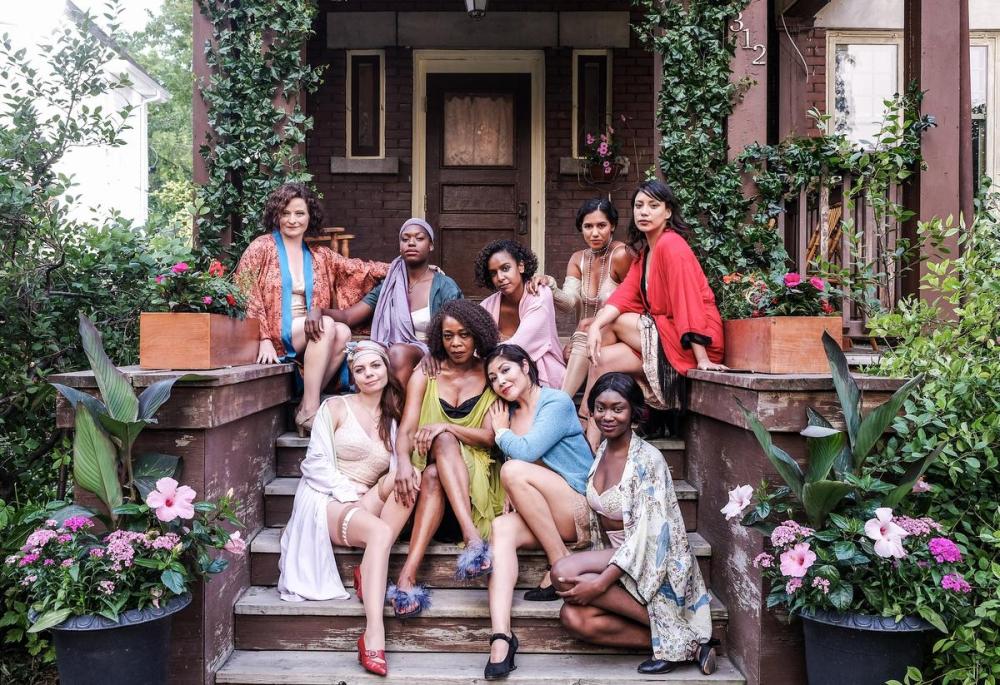
“If someone has actually had a porter for a father, the pride that’s going to be instilled in them,” Ameen says. “’That’s my dad! That’s my grandfather! And that’s what they were!’
“There’s been a lot of shame around those positions for many years. So I feel honoured in that way to be a part of changing the narrative and perpetuating what it really was and what they stood for.”
Ronnie Rowe Jr. (who starred in the 2017 Nova Scotia-lensed feature film Black Cop and plays Lt. Bryce on Star Trek: Discovery) was shaken by how much he didn’t know about the material covered in the series.
“It was disappointing to know that it took this long in my life to understand the importance of Black Canadian history,” Rowe says. “That’s why it was so important to embody them with everything that I had.”
“It was disappointing to know that it took this long in my life to understand the importance of Black Canadian history.” – Ronnie Rowe Jr.
The show goes beyond the story of railway porters in its depiction of other features of Black life in the era, such as the work of the firebrand activist Marcus Garvey, the founder of the Universal Negro Improvement Association (UNIA), which established a Montreal chapter in 1919.
The Black Cross Nurses were the women’s auxiliary of the UNIA and carried on a mission to remedy the unequal treatment of members of the Black community, who were denied access to hospitals and other medical institutions.
Actress Mouna Traoré (The Umbrella Academy), who plays Marcus’s wife, Marlene, got the chance to portray the job of the Black Cross nurse in action in the slums of Montreal. The Toronto-born Traoré is no stranger to Black history — African and Caribbean studies were part of her degrees from the Univerity of Toronto — and even she found the work on the series illuminating.
“While I was there, I was able to study Marcus Garvey and pan-Africanism, but I hadn’t heard of the Black Cross nurses,” she says. “So working on this show, it was a great opportunity to learn about them as an auxiliary program modelled after the Red Cross nurses. And it was just amazing to see what they were able to do sometimes with just a little resources.”
• • •
Will The Porter have a Season 2?
Maybe, says Annmarie Morais.
“It’s always being discussed. We want to know: Does it have legs?” she says, allowing that the TV viewing audience will ultimately make that decision.
“There’s so many more stories and we want to see how the journey plays out,” she says. “So we have fingers crossed that it will be warmly embraced.”
randall.king.arts@gmail.com
Twitter: @FreepKing

In a way, Randall King was born into the entertainment beat.
Our newsroom depends on a growing audience of readers to power our journalism. If you are not a paid reader, please consider becoming a subscriber.
Our newsroom depends on its audience of readers to power our journalism. Thank you for your support.






